
POD Work; Planets, Comet, DSOs, Supernova, Asteroids
Posted: 30 August 2011![[Home!]](../../../../../etx/images/mighty_etx_logo_orig-sm.jpg)
 |
POD Work; Planets, Comet, DSOs, Supernova, AsteroidsPosted: 30 August 2011 |
![[Home!]](../../../../../etx/images/mighty_etx_logo_orig-sm.jpg) |
| Follow @mweasner | Welcome | Photos | Videos | Equipment | Links | Data |
On Thursday, 25 August, I did some work on the POD dome. After a long time of thinking of doing it, I was finally prompted to get it done after I posted a link to my SkyShed POD 2nd "First Light" Anniversary report. There was a photo of the POD that showed some "dimples" in the dome that resulted from the dome material sticking to the insulation. Here's a "before" photo:
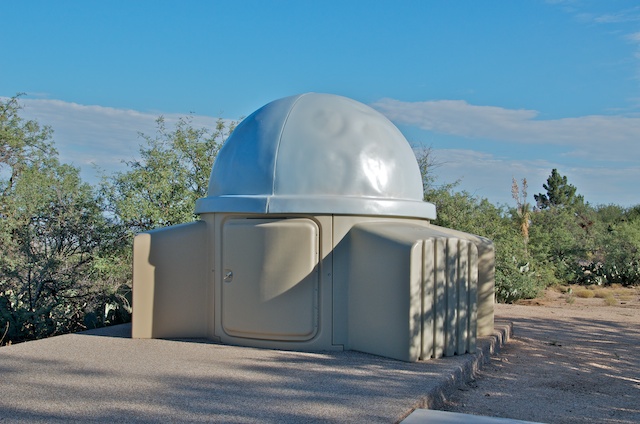
Per a suggestion from Wayne Parker at SkyShed, I used a "dome puller" (plunger, actually) to pull the dome surface away from the interior insulation.
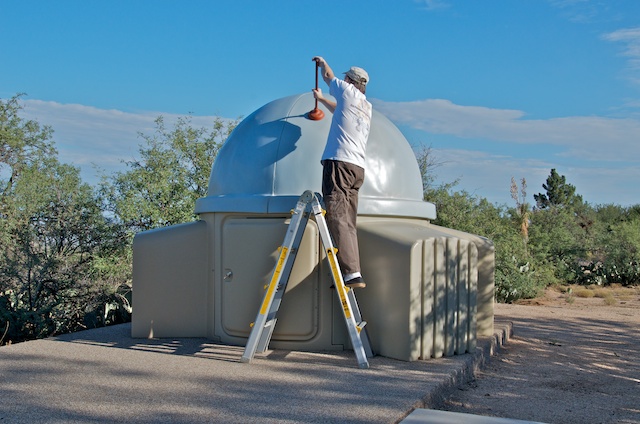
I could hear the insulation being separated from the dome when pulling in some places. After finishing the pulling, I could see some changes but dimpling was still evident.
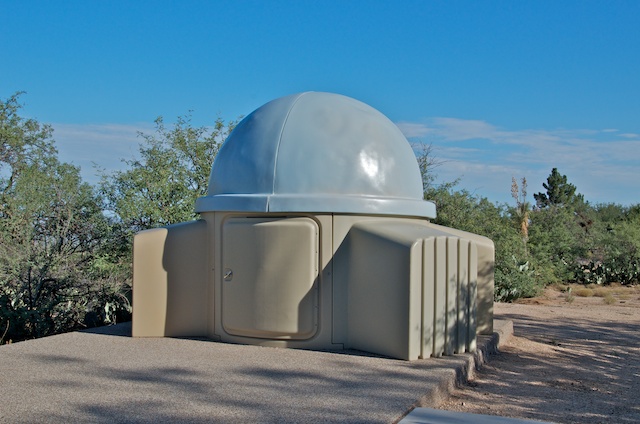
Since I didn't do this two years ago (when I should have), it may take awhile for the dome to recover its smooth surface. I checked the dome after 24 hours; there was still some dimpling but some improvements were evident. On Monday, 29 August, I checked the dome; there was some more improvement. Some dimples had begun to disappear, but others remained.
After four weeks of cloudy skies at night, I was treated to clear (but slightly hazy) skies Monday night, 29 August. I opened the observatory at 1807 MST, 106°F, for what ended up being an 8h23m session. At 1817 MST, I SYNCed the AutoStar II on Spica and then tried for Saturn and the 22-hour old moon. Didn't see either. But at 1837 MST, I picked up Saturn faintly visible at 77X. The sun set at 1852 MST; some clouds were visible low along the southern horizon. At 1904 MST, viewed Saturn at 133X; very nice even though it was low in the sky. At 1905 MST, took this photo with the iPhone 4 of a shadow from the setting sun:
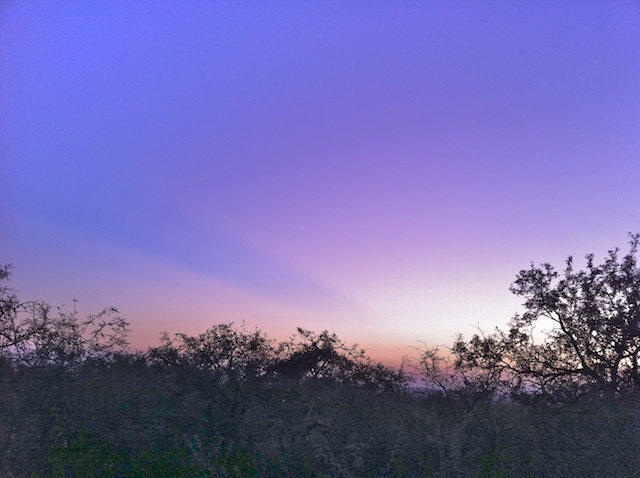
At 1915 MST, I did a re-alignment of the AutoStar. I had messed up the alignment on 20 August when I was adding some counterweight to the 8" LX200-ACF. When that was done, I observed Saturn at 133X; Titan was now visible. I then slewed the telescope to M101 to image the recent supernova. While waiting for the sky to darken, I set up for imaging with the D7000 DSLR. I added the focal reducer and attached the camera at prime focus with the Off-Axis Guider (OAG). At 1955 MST, did a focus test with the Bahtinov Mask on the star Arcturus, and at 2001 MST, I began imaging M101. A 2-minute, unguided, ISO 6400, test exposure showed the supernova! I did 5 and 10 minute guided exposures of M101. In between the two exposures, I watched a short ISS pass low along the northern horizon. Here is the 10 minute exposure with the supernova arrowed:
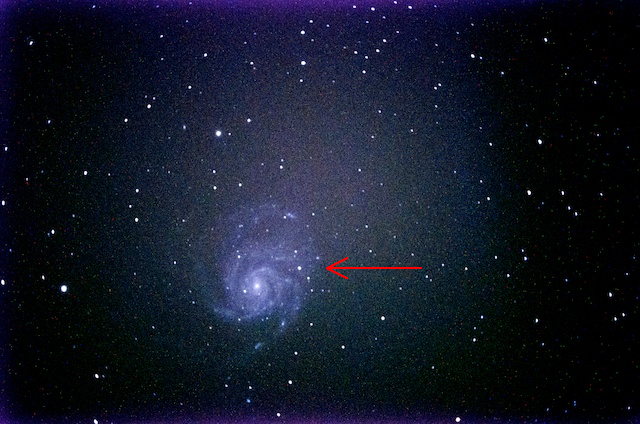
For comparison, here is an image of M101 that I took on 31 March 2011 at the same orientation:
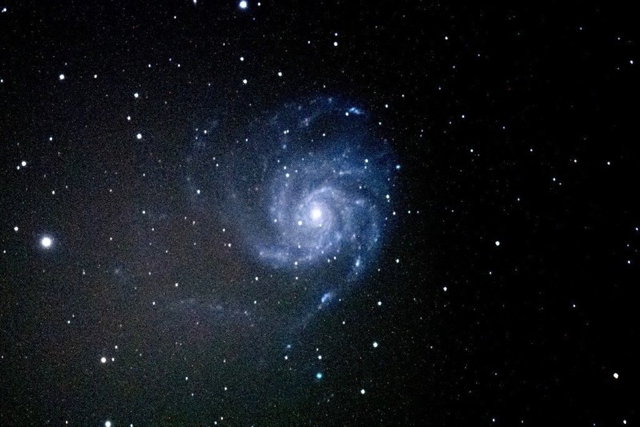
At 2036 MST, I slewed to Comet C/2009 P1 Garradd and begin imaging it at prime focus + focal reducer. However, it was too close to the zenith (where I can't image due to the POD dome) and the images were no good. At 2045 MST, I began imaging of the galaxy NGC7331, which was better positioned. (Post-processing revealed that the focus had shifted and all the images were out-of-focus. I will re-image at the next opportunity.) I ended imaging at 2115 MST; removed the camera from the telescope and added the 26mm eyepiece to the focal reducer. I took a quick look at NGC7331; it was small, faint, and fuzzy, with no detail visible at this low magnification. Then I viewed M101; with the 26mm eyepiece + focal reducer, I could not be certain I was seeing the supernova as fainter "pointer stars" were not visible. I removed the focal reducer. At 77X, I was fairly confident that I could see the supernova as it was very bright. But the pointer stars were still not easily seen, so I switched to the 15mm (133X) eyepiece. Pointer stars were now visible and yep, the supernova was very obvious.
2144 MST, viewed the asteroid Vesta at 133X and then M30 (globular cluster). I then returned to NGC7331 and observed it at 77X; with averted vision I could just make out some structure. Beginning at 2205 MST, I viewed Comet Garradd, now west of the meridian, at 77X. Also, viewed it in 7x50 binoculars; it was small and faint. But at 77X in the 8" telescope, its green tail and coma, and its nucleus were all very nice. I then began setting up for prime focus imaging of the comet with the D7000 DSLR. Did a focus test on Altair and then did 1, 2, and 3 minute, ISO 6400, unguided exposures of the comet. Here is the 3 minute exposure:
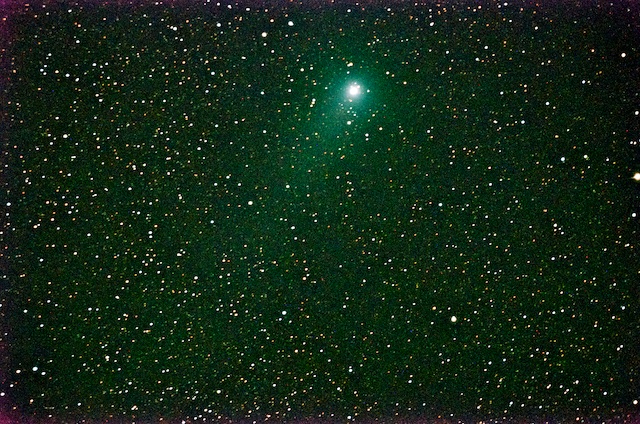
Next, I mounted the D7000 DSLR piggyback on the 8" telescope and imaged the comet at f/5.6, focal length 300mm, ISO 6400. I did 1, 2, 3, 4, and 5 minute unguided exposures. This is the 5 minute exposure, with a portion of the Milky Way as a background:
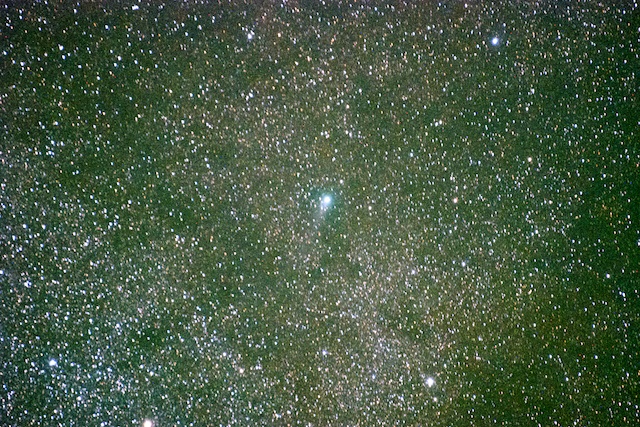
I ended comet imaging at 2350 MST. Viewd the comet at 133X and began watching for its movement against the background stars. Some clouds were now approaching from the southwest. Switched to the 9.7mm (206X) eyepiece; the nucleus was very distinct and motion of the comet was very obvious in just a few minutes.
At 0013 MST, viewed the asteroid Ceres at 77X, and then went to Jupiter. There were five moons visible; well actually just the four Galilean Moons and one bright star lined up along with the moons. It was nice to see both equatorial belts again, as well as a lot of other cloud bands. I continued observing Jupiter; at 0033 MST, seeing was not very good, but occasionally there were some details visible in the North Equatorial Belt at 364X. I then began setting up for iPhone afocal imaging of Jupiter using the MX-1 afocal adapter. This is a cropped image showing the four Galilean Moons (left-to-right: Callisto, Io, Europa, Ganymede):

This uncropped image of Jupiter was taken at 666X with a Moon Filter on the eyepiece:
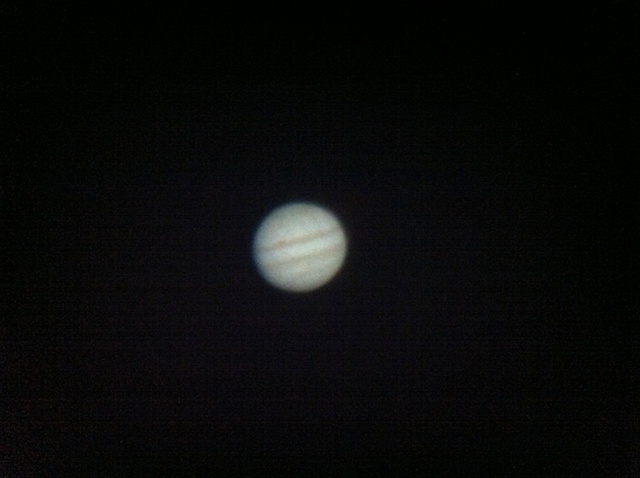
This uncropped image was also taken at 666X with a Moon Filter on the eyepiece, but is a single frame from an iPhone video recording:
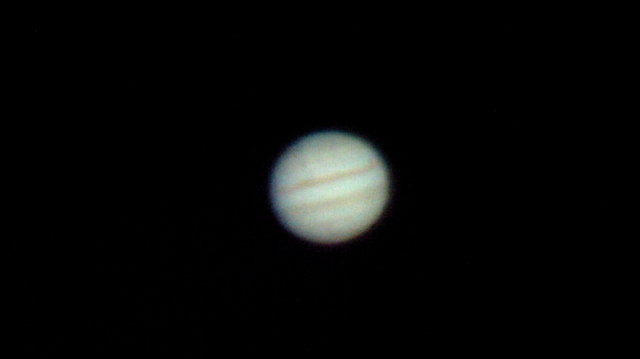
Ended imaging at 0105 MST and resuming observing Jupiter. Tried at 619X and 1091X but seeing was not good enough. However, the view at 364X was lovely. I then viewed some old favorites at 77X: M31, Double Cluster, and the Pleiades. At 0122 MST, the temperature was still 80°F. I did a tour of DSOs in the constellation of Aquarius: M72 (globular cluster), M73 (open cluster), NGC7009 (Saturn Nebula), M2 (globular cluster), and NGC7293 (Helix Nebula).
At 0137 MST, viewed Uranus at 77X and 364X. A nice disk was visible at 364X. Then viewed Neptune at 77X and 364X; small faint disk at 364X. At 0155 MST, I set up for iPhone afocal imaging. I initially tried for Neptune but clouds were now covering it. Uranus was still in the clear and I captured it in this uncropped, single frame from a video, 666X:

At 0211 MST, clouds were covering most of the sky. Decided to close the observatory. It was great being back at the telescope after 4 weeks of no night time viewing and getting only one other session since 15 July due to cloudy nights. This long period of cloudy nights due to the monsoon weather pattern was unusual. Unfortunately, we did not get much rain from the monsoon storms and we need a LOT. Closed the observatory at 0230 MST, 79°F.
Go to the previous report.
Return to the Cassiopeia Observatory Welcome Page.